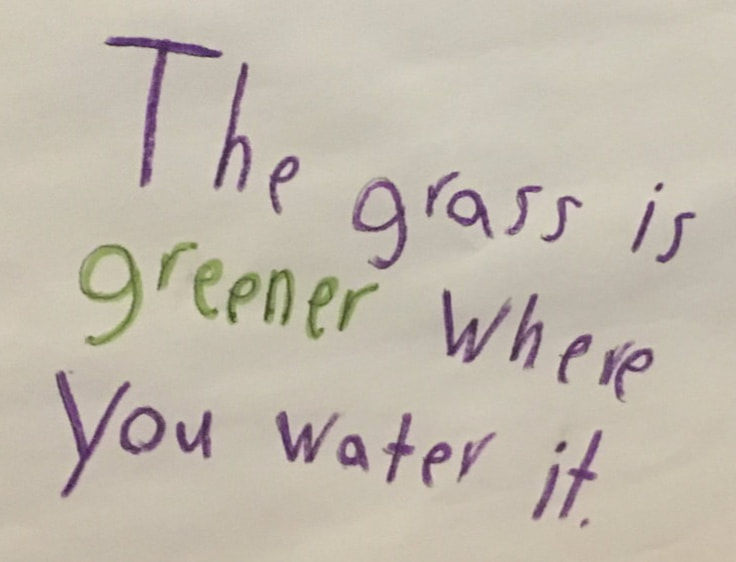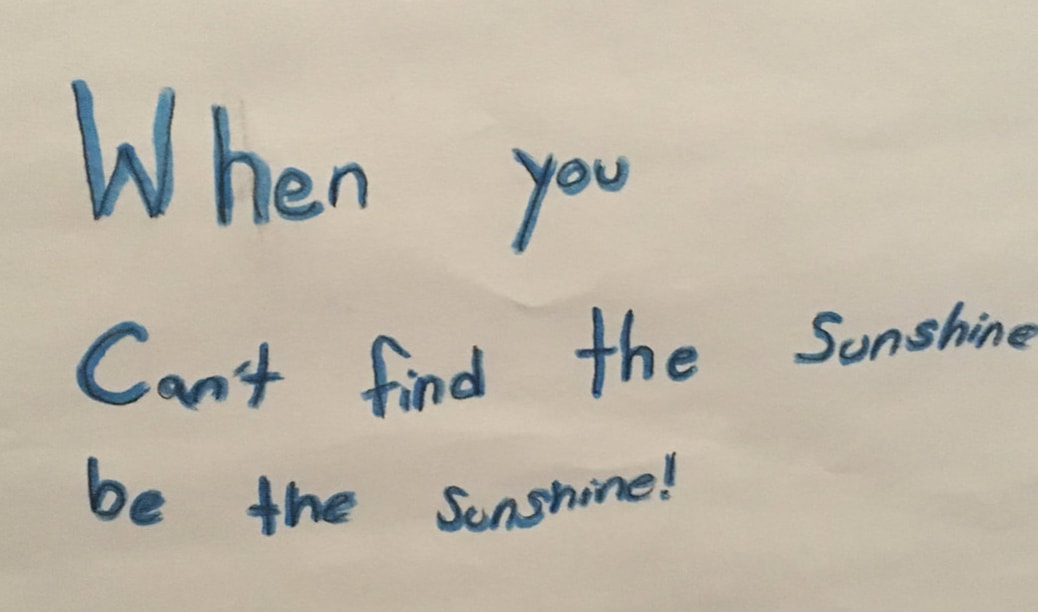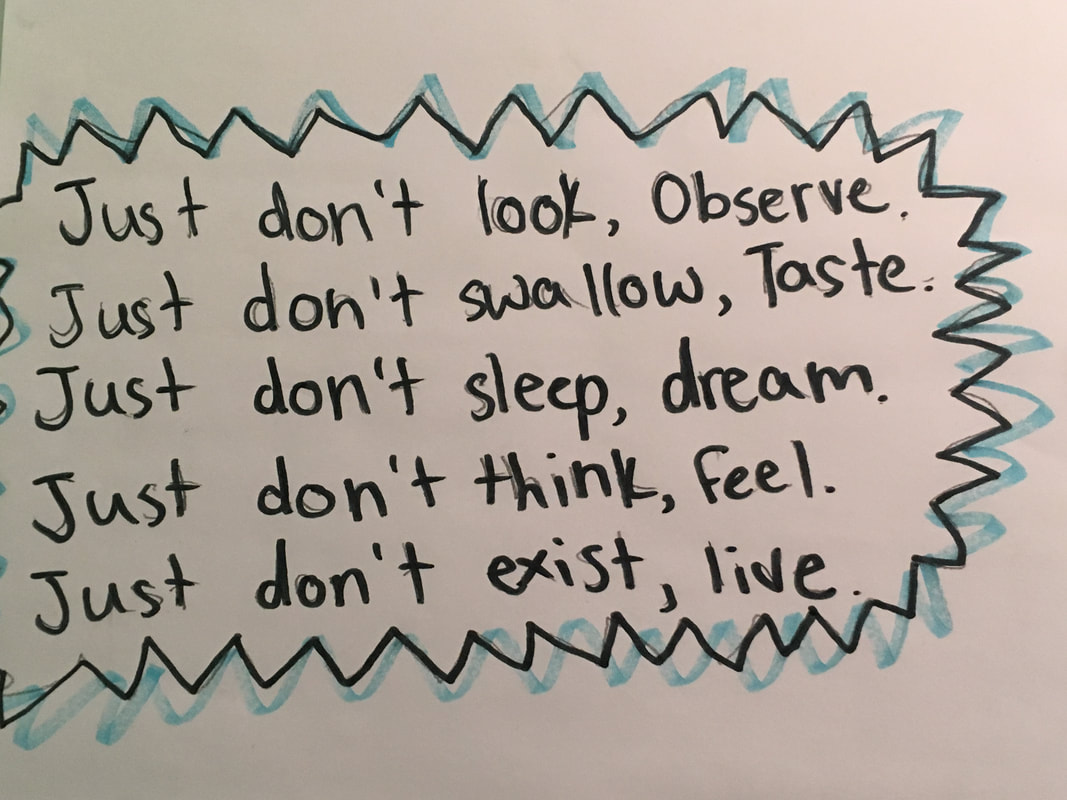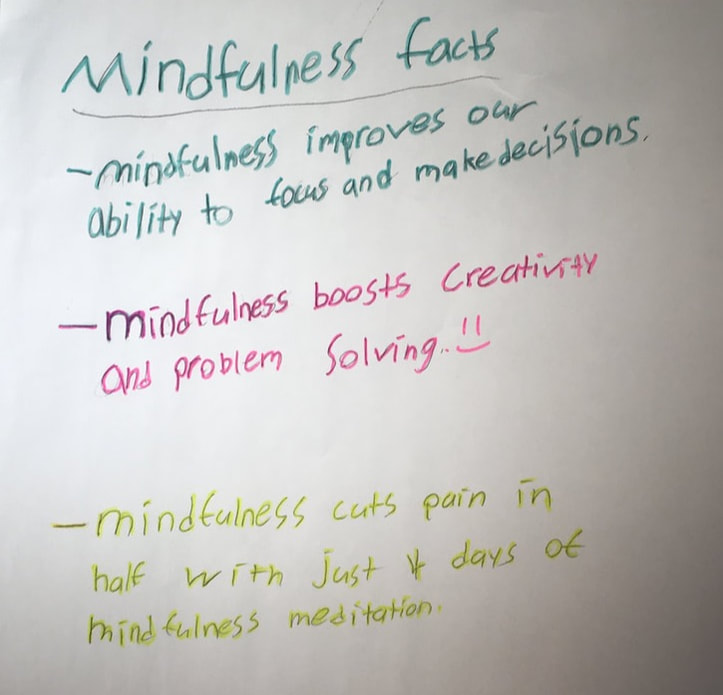|
Think about your day… how many times to you find your head going through the “to-do “list? How often do you find yourself completing a task and yet immersed in thoughts of something else? How often do your thoughts spiral into the realm of the negative? Now…ask yourself this…how often do you allow yourself to live completely in the present moment? We’ve been exploring the topic of mindfulness at Via Vita and the ways in which we can incorporate even more strategies to help our students live self-aware, fulfilling lives. Before we can dive into the “how to” of mindfulness, it's important to first understand what it is, and why we here at Via Vita, feel it will be a game changer for our students. We’ll begin by debunking what mindfulness isn’t. In his book Growing up Mindful, Christopher Willard outlines some common misconceptions about the practice of mindfulness. We thought we’d elaborate on some of our favourites: Myth #1: Mindfulness is selfish. There are better uses of our time. Reality: Mindfulness is a health practice. One of the most important lessons we can teach our children/students, is that in order to for us to take care of others, we must first take care of ourselves. Putting your own health first is never selfish! Myth #2: Mindfulness indicates weakness Reality: Mindfulness strengthens and empowers! Mindful practices teach us to cope with difficult situations and help us to form resilience! It’s easy to fall prey to our natural “fight or flight” instincts, but mindfulness teaches us how to be the calm within the storm! Myth #3: Mindfulness = magic Reality: Okay, so it may not exactly be “magic”, but it is pretty powerful! Mindfulness helps students to become in touch with their emotional reactions. It builds an awareness of body, mind, and spirit. People who practice mindfulness have incredible tools to deal with stress and adversity. Moreover, mindful people are more intuitive decision makers. Thus, while it’s not “magic”, it’s an amazing life skill! Forget invisibility and x-ray vision…let mindfulness be your super power! So, now that we know what mindfulness isn’t…what exactly is it? Mindfulness encourages us to zero in on the here and now. We let go of past sadness (depression) and future worry (anxiety), and focus on the present. Mindful practices encourage us to become aware of our own thoughts and emotional patterns. When we stop, listen, and feel, we suddenly become privy to self-knowledge that was once concealed or over-shadowed by negative thoughts. When we take stock of where are minds wander, we ultimately unveil the truth. Christopher Willard sums up the process of being mindful with the “4 R’s”: Rest awareness on a particular focus or “anchor” Recognize when are where your thought/focus wanders Return awareness gently to the focus/anchor Repeat Now that you have a general sense of what mindfulness is, perhaps you can see why we feel it’s so important for our students here at Via Vita. If you’re still not sold, here are some of the incredible benefits that we see emerging from mindful practices: Practicing non-judgment: Our inner critic…we all have one. For some of us, our inner critic carries a megaphone. Adolescence in particular is unfortunately a time that is often plagued with insecurity. With the prevalence of social media, youth are bombarded with images of comparison. Mindfulness encourages us to examine the words we speak to ourselves and find contentment in where we are right now. We become aware of all aspects of ourselves…without judgment or comparison. Learning ‘response-ability’: We’ve all been there…our “fight or flight” takes over and suddenly we lose all control. In Growing up Mindful, Christopher Willard points to the importance of teaching youth to respond rather than react. A reaction is thoughtless, impulsive, and often regretful. A response on the other hand, is controlled, thoughtful, and with purpose. When students become in tune with their emotional reactions, they can develop mindful strategies to coping with anger, anxiety, and sadness. Willard deems this act of mindful response, teaching our youth “response-ability”. Teaching how to be alone: Loneliness is unfortunately a growing concern amongst today’s youth. Young people are often overscheduled with little downtime. They are constantly plugged in and connected through social media, and yet, there is a growing disconnect with their own thoughts and feelings. The reality is, that so many of our children and students don’t know how to be alone with themselves. When they are alone, they are suddenly bombarded with thoughts and emotions that they are not used to, and don’t know how to cope with…this leads them to go looking for distractions. Teaching children how to be alone is thus an essential life skill. Susan Turke perhaps explained this phenomenon best when she said: “If we don’t teach our children to be alone, they’re only going to know how to be lonely.” So hopefully at this point you can see why we are so excited by the topic of mindfulness. There are many aspects of these practices that we already use here at Via Vita and have seen the results in our students. We can’t wait to learn more about the topic and implement more practices on a daily basis! Like any skill, mindfulness takes time and practice to develop. Mindfulness also pushes students to confront their emotions, which can lead to some resistance at first. However, we all feel that the benefits of daily mindfulness will empower our students in ways in which they couldn’t imagine! We look forward to sharing more about our journey with mindfulness over the course of the next year!
Sincerely, Ms. Meghan, Ms. Zoe & the Megaladon Class (Grade 7-9)
0 Comments
Your comment will be posted after it is approved.
Leave a Reply. |
Welcome to Our BlogEach post is written by a supportive member of Via Vita Academy, be it a teacher, parent, student, community member, who is invested in the topic of education. Take a read and comment below! Archives
February 2022
Categories
All
|











 RSS Feed
RSS Feed